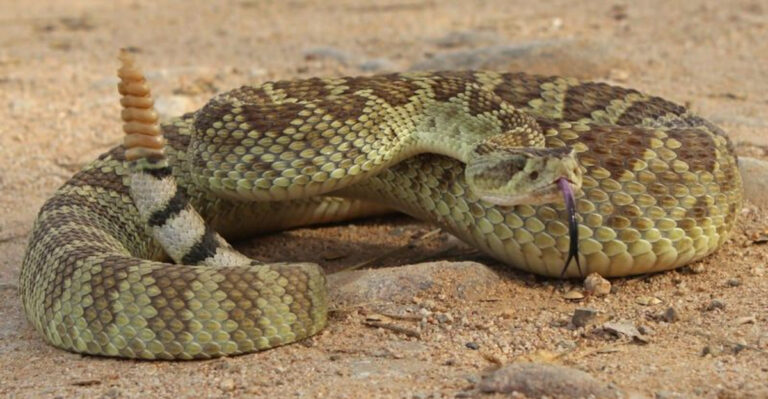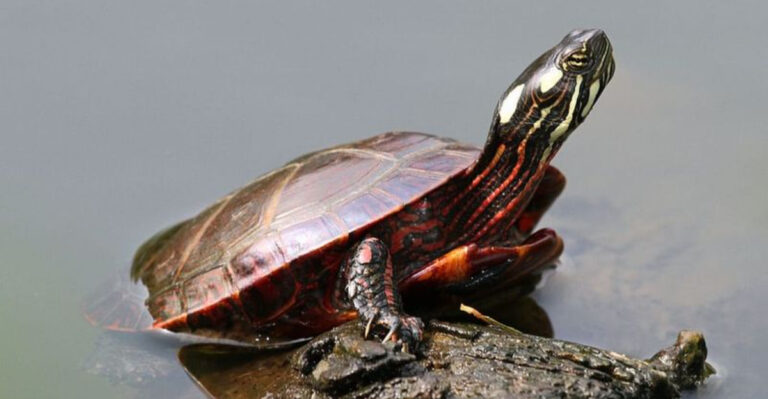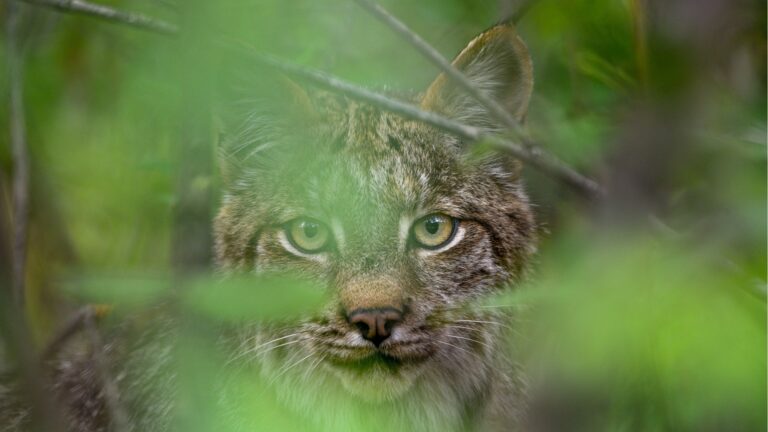13 Snakes That Call The East Coast Home
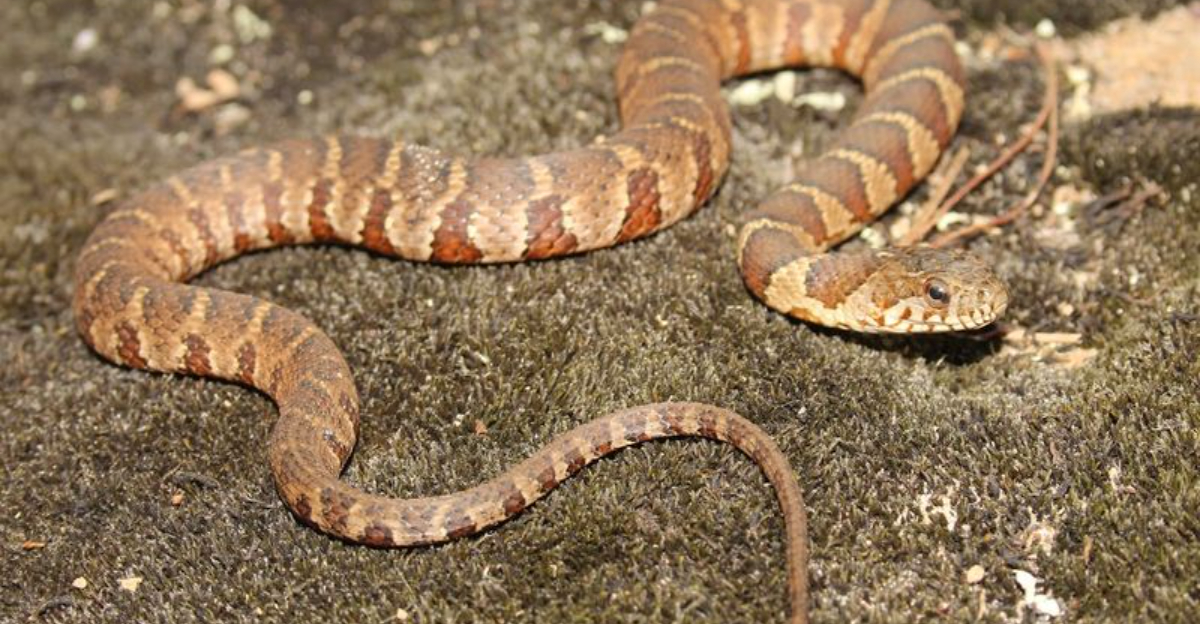
The East Coast of the United States is home to a fascinating variety of snake species, each playing a unique role in the local ecosystem.
From venomous predators to harmless garden visitors, these reptiles have adapted to diverse habitats ranging from coastal marshes to mountain forests.
Whether you’re a wildlife enthusiast or just curious about your slithering neighbors, knowing which snakes share our East Coast region can help foster appreciation rather than fear.
1. Eastern Diamondback Rattlesnake
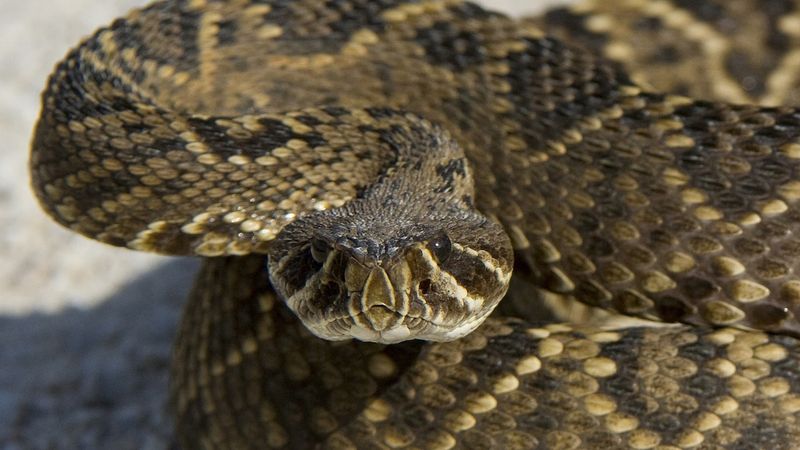
Commanding respect with its impressive size, the Eastern Diamondback can grow up to 8 feet long, making it the largest venomous snake in North America. Its diamond-shaped patterns provide perfect camouflage in the coastal habitats of the southeastern states.
Despite their fearsome reputation, these rattlers prefer to avoid humans, using their distinctive rattle as a warning before striking. They’re vital for controlling rodent populations throughout their range.
2. Black Racer
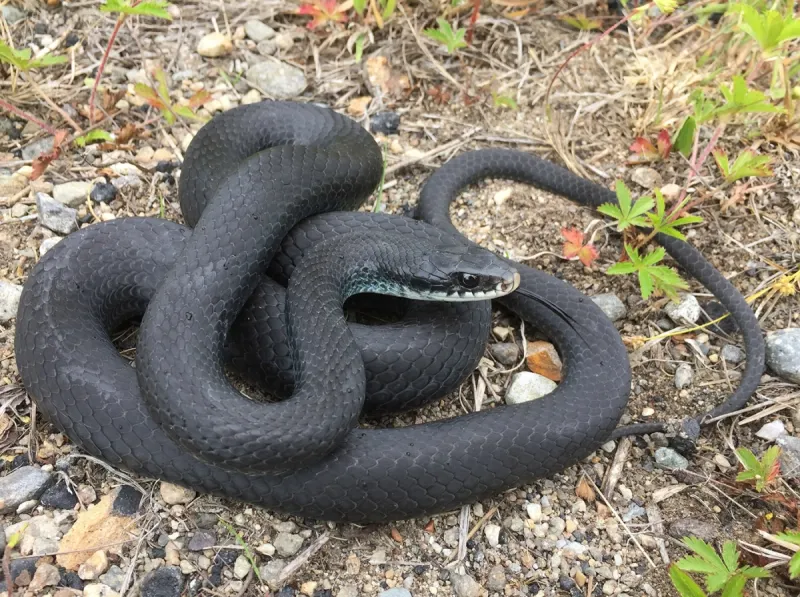
Zooming through fields and forests at speeds up to 4 mph, the Black Racer earns its name honestly. These sleek, jet-black snakes have a reputation for boldness, sometimes standing their ground rather than slithering away when confronted.
Morning hunters by nature, they track down rodents, frogs, and even other snakes using their excellent vision. Despite their intimidating speed, they’re completely harmless to humans.
3. Eastern Coral Snake

Dazzling red, yellow, and black bands make the Eastern Coral Snake one of the most striking reptiles on the East Coast. Remember the rhyme: “Red touch yellow, kill a fellow” – this helps distinguish it from harmless mimics.
Surprisingly shy and rarely seen, these venomous beauties spend most of their time burrowing underground. Their powerful neurotoxic venom requires immediate medical attention, though bites are extremely rare.
4. Timber Rattlesnake
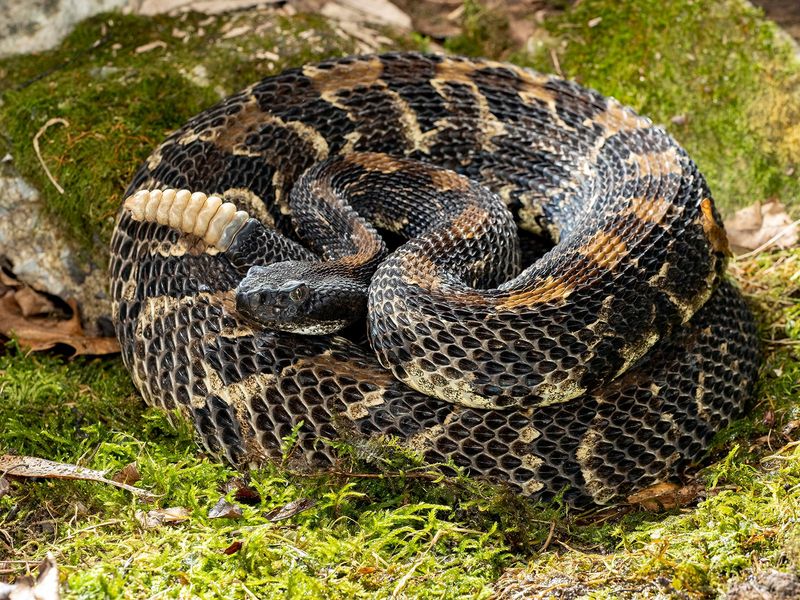
Masters of patience, Timber Rattlesnakes may wait for days in a single hunting spot for prey to pass by. Their color variations range from yellow to black, with dark chevron-shaped bands across their backs.
Mountain hikers might encounter these venomous snakes basking on rocky outcrops. Conservation efforts are crucial as habitat loss has led to their threatened status in many East Coast states.
5. Northern Water Snake

Often mistaken for cottonmouths, these non-venomous swimmers are common around lakes, rivers, and marshes along the East Coast. Northern Water Snakes have thick bodies with variable coloration – usually brown or gray with darker blotches.
Fish-catching experts, they’ll dive underwater and stay submerged for several minutes while hunting. When threatened, they release a musky odor and may flatten their bodies to appear larger.
6. Eastern Garter Snake
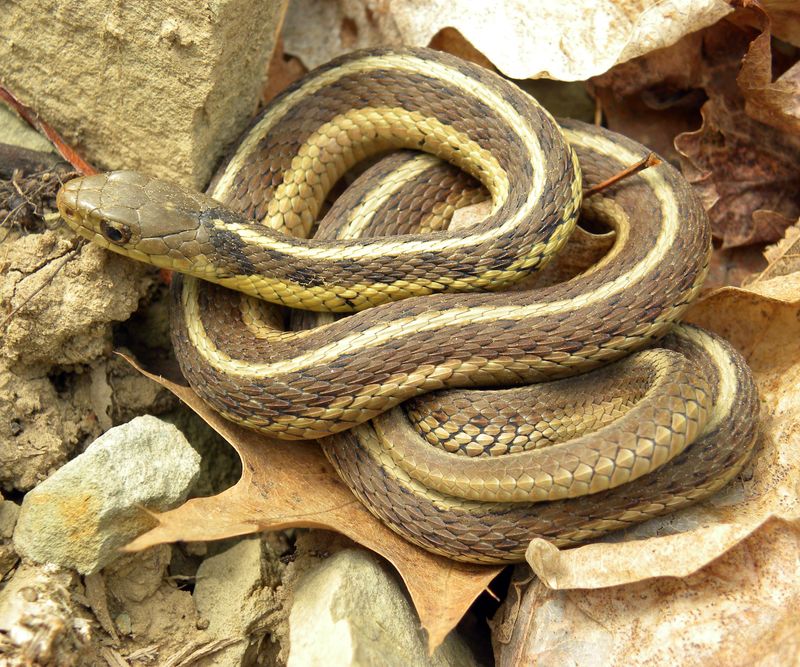
Gardeners’ allies, these slender snakes with distinctive yellow stripes help control slugs, insects, and other pests. Eastern Garter Snakes are among the first reptiles to emerge from hibernation in early spring.
Highly adaptable, they thrive in suburban environments and don’t mind human presence. Though they can release a smelly musk when handled, they rarely bite and pose absolutely no threat to people or pets.
7. Southern Black Racer
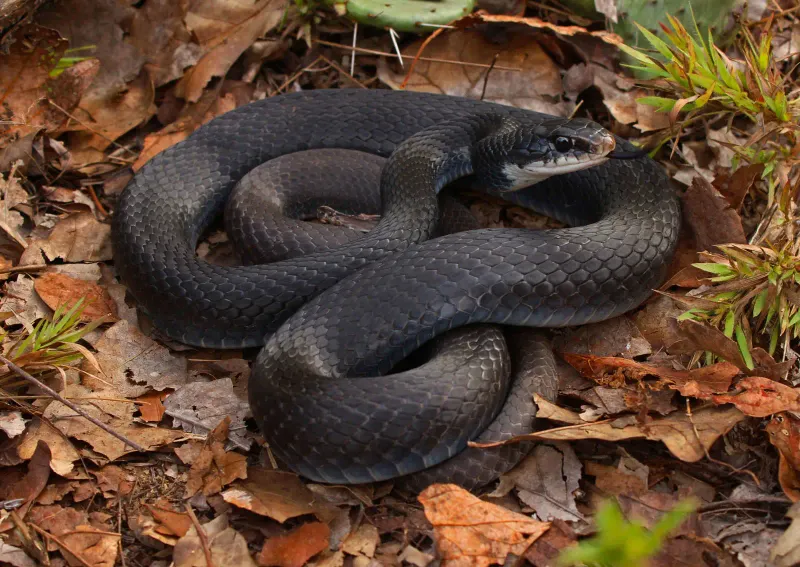
Lightning-quick and glossy black with a white chin, the Southern Black Racer brings drama to any backyard encounter. These athletic hunters chase down prey rather than constricting or using venom.
Young racers look completely different from adults, featuring brown blotches that fade as they mature. Active during daylight hours, they rely on excellent vision rather than heat-sensing or smell to locate meals.
8. Eastern King Snake
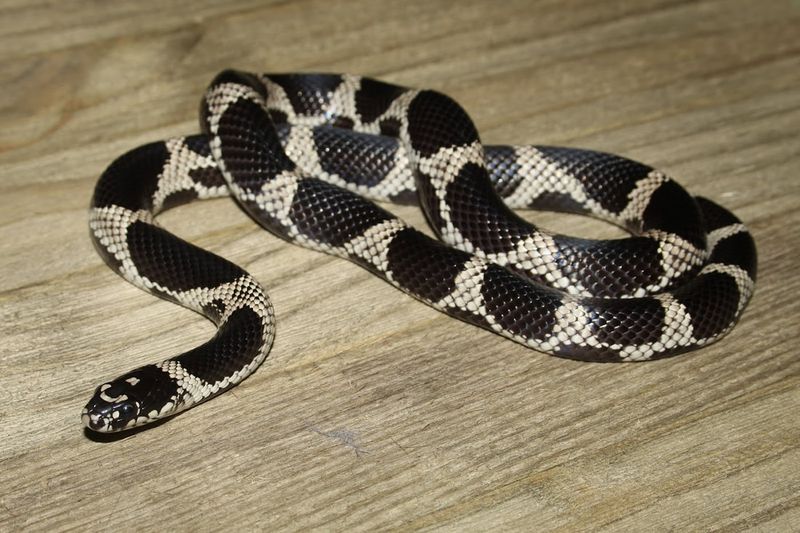
Royalty among reptiles, these glossy black snakes with white or yellow chain-like patterns are immune to the venom of rattlesnakes and copperheads. Eastern King Snakes fearlessly hunt and consume other snakes, including venomous species.
Powerful constrictors, they squeeze prey until it stops breathing. Homeowners lucky enough to spot one should celebrate – they’re nature’s best defense against more dangerous serpents.
9. Rat Snake

Attic explorers and rodent controllers, Rat Snakes are the unsung heroes of many East Coast homes. Growing up to six feet long, these powerful constrictors excel at climbing trees, walls, and even entering buildings in pursuit of mice.
Regional varieties include the black rat snake of the northeast and the yellow rat snake found in Florida. Despite their intimidating size, they’re shy around humans and completely harmless unless cornered.
10. Copperhead

Autumn leaf impersonators, Copperheads blend perfectly into forest floors with their copper-colored heads and hourglass-patterned bodies. Unlike other venomous snakes, they give no warning before striking when threatened.
Surprisingly, they’re the most common venomous snake in many East Coast states. While their bite rarely proves fatal to adults, it’s extremely painful and requires immediate medical attention.
11. Milk Snake
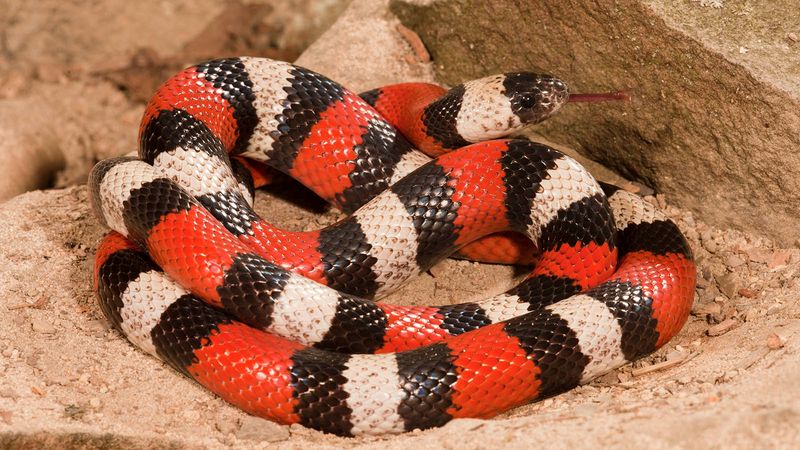
Sporting vibrant red, black, and yellow bands, Milk Snakes evolved to mimic their venomous coral snake cousins. The key difference? Their bands follow the pattern “red touch black, friend of Jack” – a lifesaving rhyme for identification.
Named after an old myth that they drank milk from cows, these harmless beauties actually prefer rodents and other small prey. Secret night hunters, they’re rarely spotted during daylight hours.
12. Scarlet Kingsnake
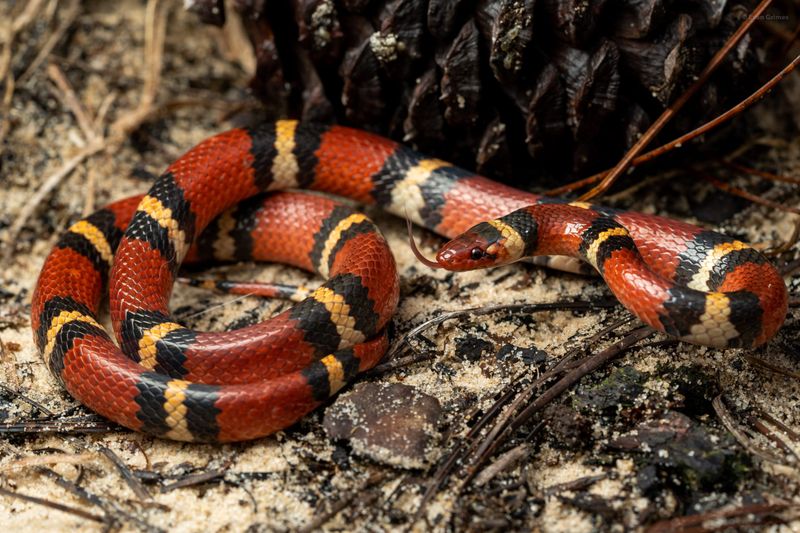
Jewel-like in appearance, Scarlet Kingsnakes dazzle with their candy-cane coloration of red, black, and white (or yellow) bands. Often confused with coral snakes, they’re completely harmless and actually help control rodent populations.
Secretive by nature, these small snakes rarely exceed two feet in length. They prefer spending time under logs and rocks in pine forests throughout the southeastern coastal plain.
13. Pine Snake
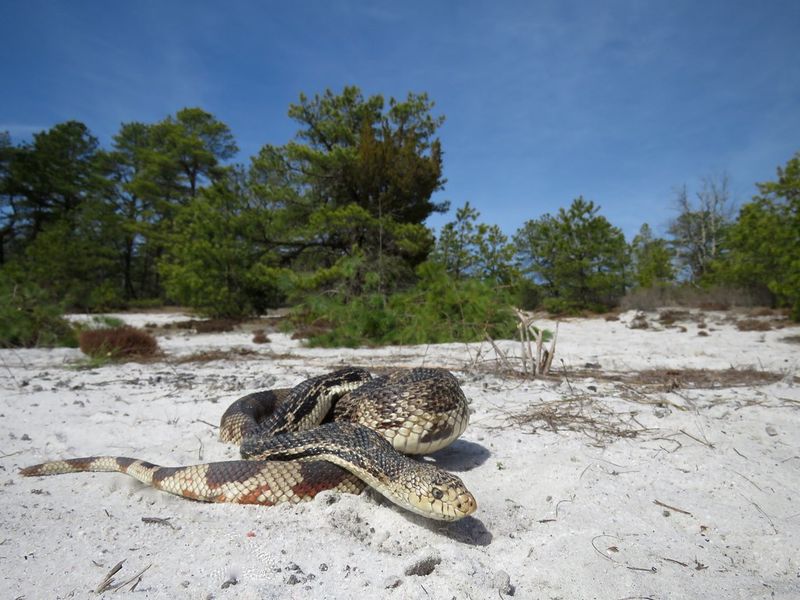
Bulldozers of the snake world, Pine Snakes use their specially adapted snouts to dig extensive burrow systems in sandy soils. Their impressive size – up to 7 feet long – and loud hissing displays can startle hikers in pine forests.
Population numbers have declined due to habitat loss. These non-venomous constrictors have a distinctive pattern of black or brown blotches on a whitish background, perfect for camouflage among pine needles and sandy soil.

